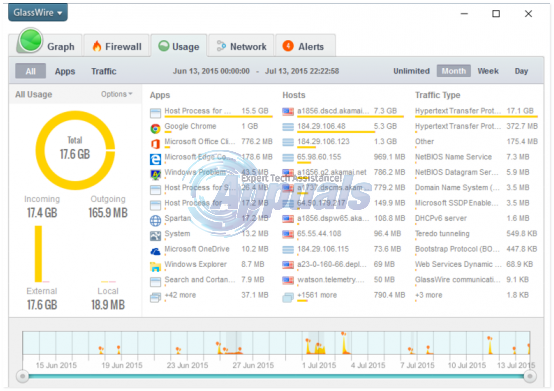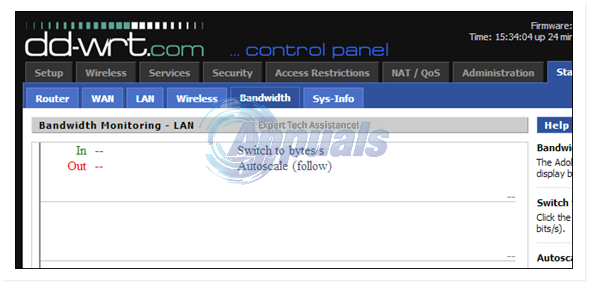As simple as tracking the amount of data that has come into and out of your internet connection may sound, with as many bandwidth and data usage monitoring options out there as there are, most people have no clue what route they should take to monitor their bandwidth and data usage. Well, the following are some of the best and most effective methods (and mediums) that you can use to monitor both your bandwidth and data usage:
Method 1: Use GlassWire
GlassWire is one of the best third-party firewall applications out there for the Windows Operating System, but GlassWire can do a lot more than just give your Windows computer an extra layer of security from external threats. GlassWire is a great tool that you can also use to monitor your bandwidth and data usage. GlassWire can be downloaded for free by going here and clicking on the Download GlassWire Free button. Once you have downloaded GlassWire, go ahead and install it, and then run the application. When you open GlassWire, the first thing you are greeted with is a graph of all of your computer’s network activity in real time – meaning that the information on the graph is updated every single second so you always have the freshest network activity information. However, the application’s Usage tab is where it truly shines. In the Usage tab, you will be able to find a summary of the amount of data that has came into your computer and gone out of your computer in the past month. You can also view your computer’s bandwidth and data usage by the week or even by the day. Apart from displaying the amount of data that both incoming connections and outgoing connections have used, the Usage tab also provides users with the opportunity to drill down into individual apps and programs, have a look at the amount of bandwidth and data they are using, check out what hosts and servers they are connecting to and even go as far as to find out what kind of traffic it is.
Method 2: Use your Internet Service Provider’s web interface
Almost every single Internet Service Provider has a web interface of web portal for the convenience of their customers, and that is especially the case with Internet Service Providers whose “Unlimited” internet plans actually have data caps and are limited. Most Internet Service Provider web interfaces and portals have an area dedicated specifically to the amount of data the user has used. One of the best and simplest ways you can use to monitor how much data you have used is to simply access your ISP’s web interface and look for this area as this area will contain your monthly data usage statistics. The name of this area will either involve the term data, the word usage or both. The only drawback to using this method to monitor your bandwidth is the fact that most ISPs only update their web interface with new data usage statistics once or twice a day, making it impossible for you to get real-time statistics.
Method 3: Use DD-WRT
The most highly recommended method of monitoring your bandwidth on this list is definitely this one as it allows you to monitor the bandwidth used by ALL of the devices connected to a specific internet network and not just your own computer. This method achieves this by monitoring the packets of data sent via the internet not by a single computer or phone but by the router itself. Since all of the devices on your personal internet network have to be connected to your router in order to be able to access the internet, this gives you a complete idea of how much internet is being used on your internet network. This is accomplished using a program – or a third-party router firmware, to be more specific – known as DD-WRT. To monitor the bandwidth and data usage of your entire network using DD-WRT, you need to: Go here, look for your router and download DD-WRT for it. Install DD-WRT. Access the DD-WRT web interface. Navigate to the Status Click on Bandwidth. Here you will be able to see numbers pertaining to the amount of data that has been brought into and sent out of your internet network through your router.
How to Monitor Bandwidth Utilisation with NetFlow Traffic Analyzer?How to Monitor your Website using Website Performance Monitor?How to Monitor your Storage Resources using Storage Resource Monitor?How To Use Your Android Phone Or Tablet As An Extra Monitor For Your Windows PC

